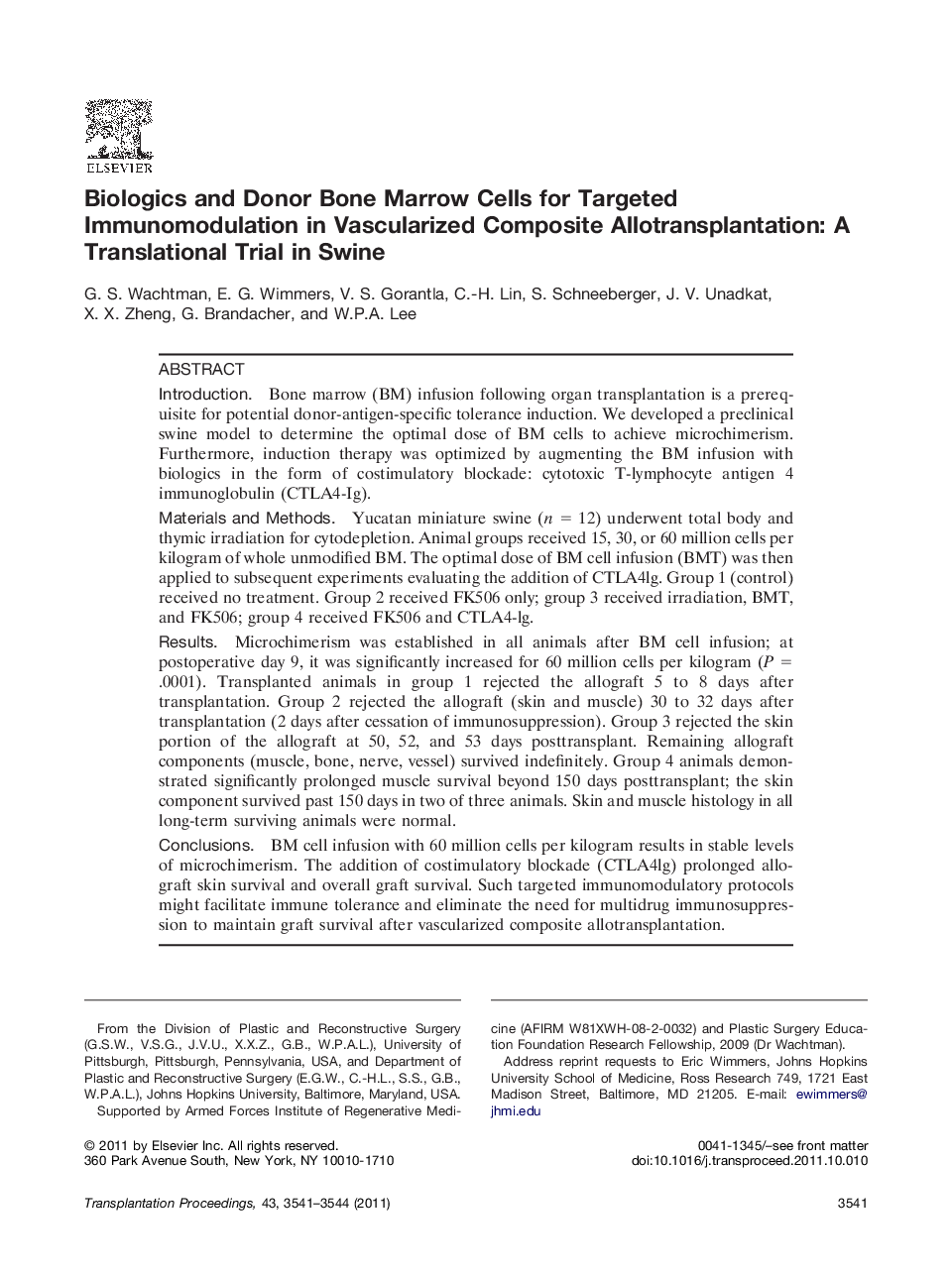| کد مقاله | کد نشریه | سال انتشار | مقاله انگلیسی | نسخه تمام متن |
|---|---|---|---|---|
| 4258638 | 1284559 | 2011 | 4 صفحه PDF | دانلود رایگان |

IntroductionBone marrow (BM) infusion following organ transplantation is a prerequisite for potential donor-antigen-specific tolerance induction. We developed a preclinical swine model to determine the optimal dose of BM cells to achieve microchimerism. Furthermore, induction therapy was optimized by augmenting the BM infusion with biologics in the form of costimulatory blockade: cytotoxic T-lymphocyte antigen 4 immunoglobulin (CTLA4-Ig).Materials and MethodsYucatan miniature swine (n = 12) underwent total body and thymic irradiation for cytodepletion. Animal groups received 15, 30, or 60 million cells per kilogram of whole unmodified BM. The optimal dose of BM cell infusion (BMT) was then applied to subsequent experiments evaluating the addition of CTLA4lg. Group 1 (control) received no treatment. Group 2 received FK506 only; group 3 received irradiation, BMT, and FK506; group 4 received FK506 and CTLA4-lg.ResultsMicrochimerism was established in all animals after BM cell infusion; at postoperative day 9, it was significantly increased for 60 million cells per kilogram (P = .0001). Transplanted animals in group 1 rejected the allograft 5 to 8 days after transplantation. Group 2 rejected the allograft (skin and muscle) 30 to 32 days after transplantation (2 days after cessation of immunosuppression). Group 3 rejected the skin portion of the allograft at 50, 52, and 53 days posttransplant. Remaining allograft components (muscle, bone, nerve, vessel) survived indefinitely. Group 4 animals demonstrated significantly prolonged muscle survival beyond 150 days posttransplant; the skin component survived past 150 days in two of three animals. Skin and muscle histology in all long-term surviving animals were normal.ConclusionsBM cell infusion with 60 million cells per kilogram results in stable levels of microchimerism. The addition of costimulatory blockade (CTLA4lg) prolonged allograft skin survival and overall graft survival. Such targeted immunomodulatory protocols might facilitate immune tolerance and eliminate the need for multidrug immunosuppression to maintain graft survival after vascularized composite allotransplantation.
Journal: Transplantation Proceedings - Volume 43, Issue 9, November 2011, Pages 3541–3544